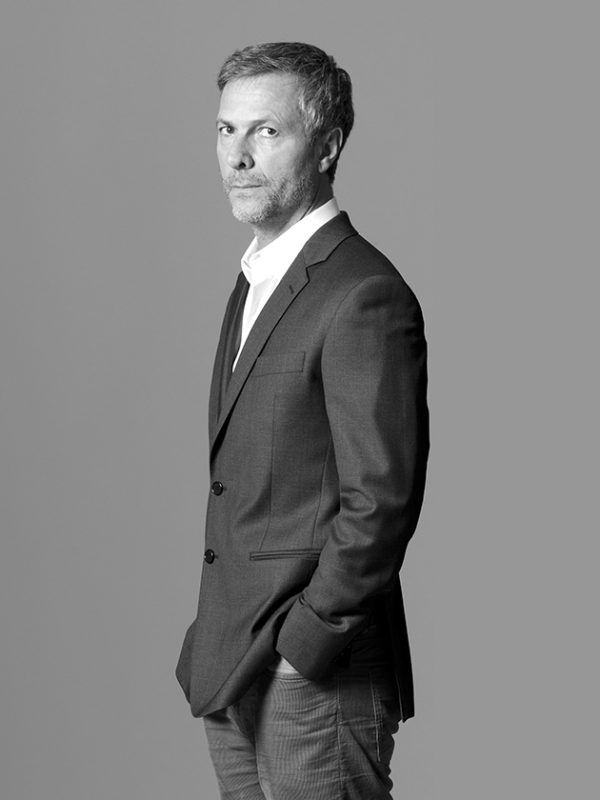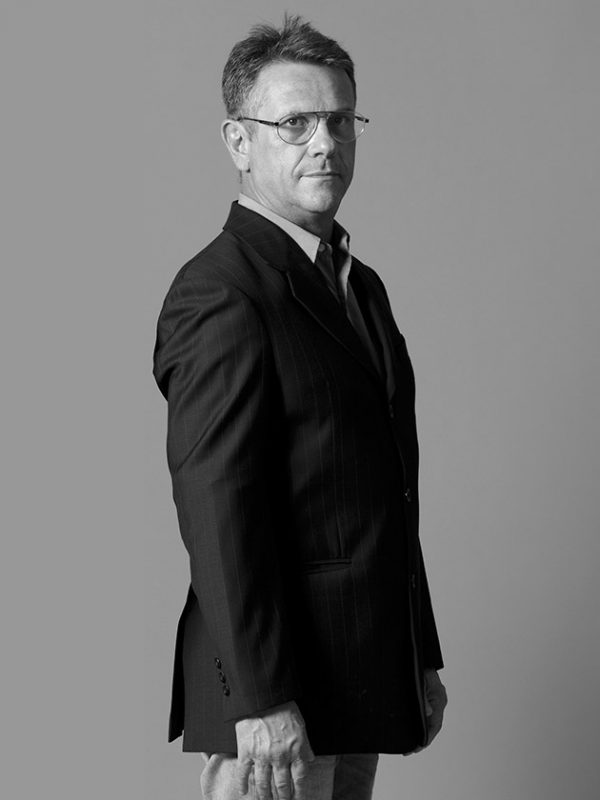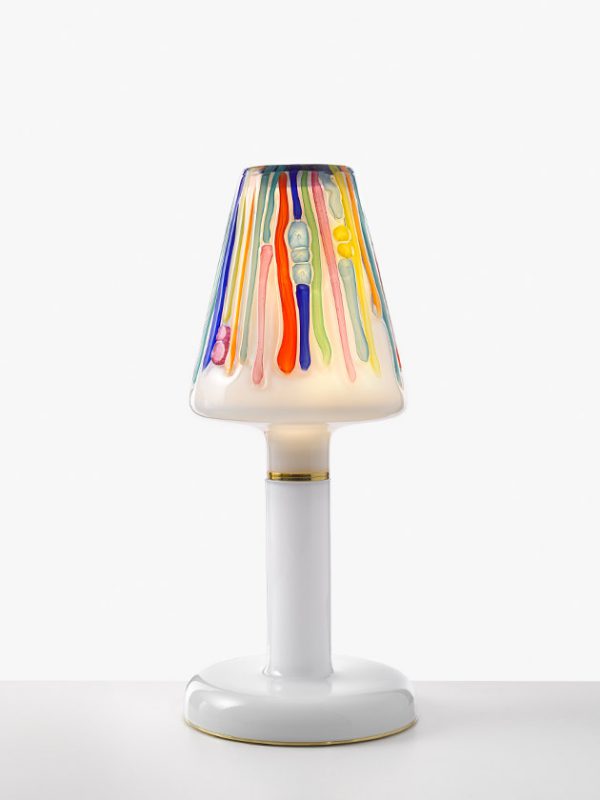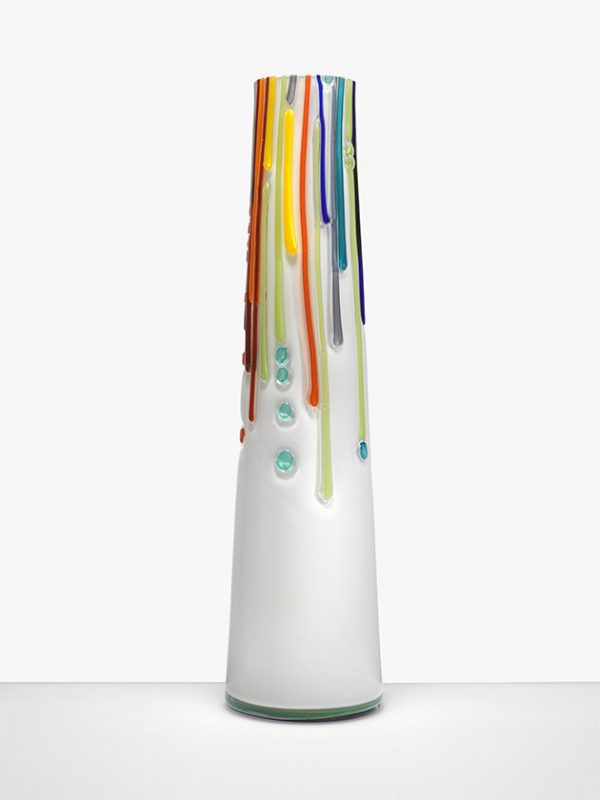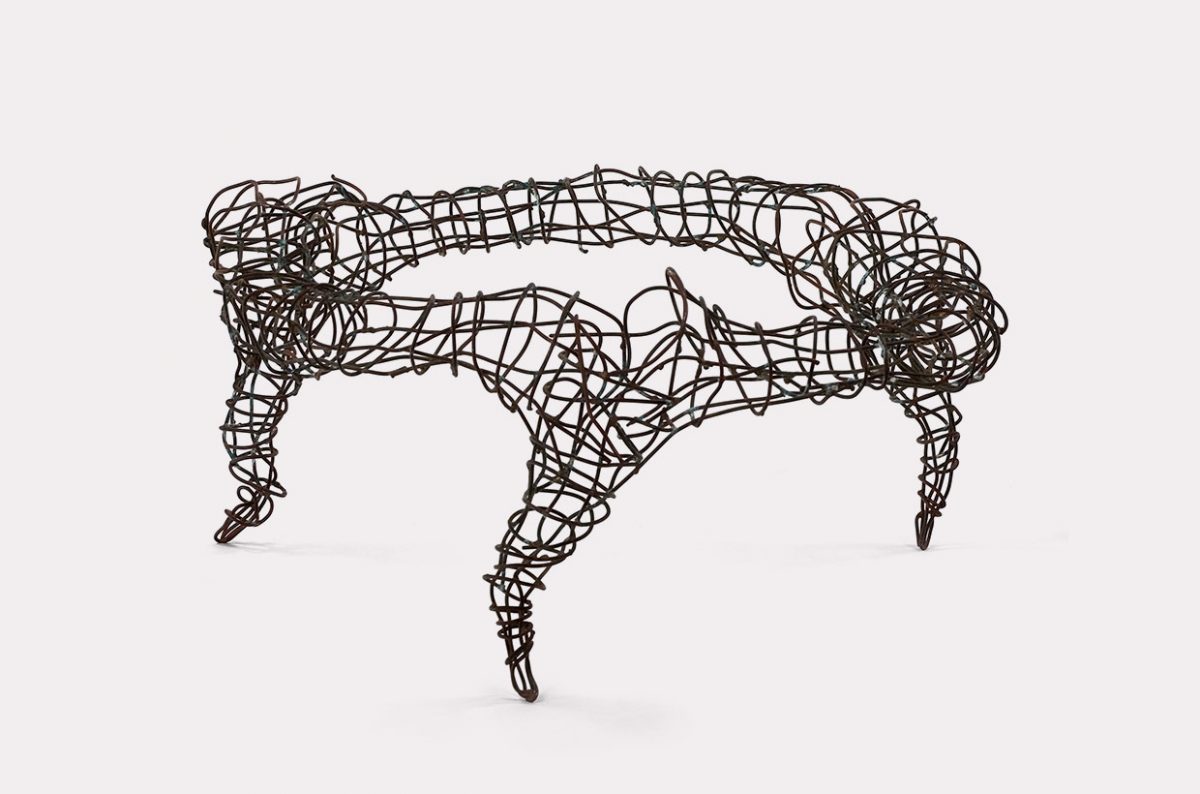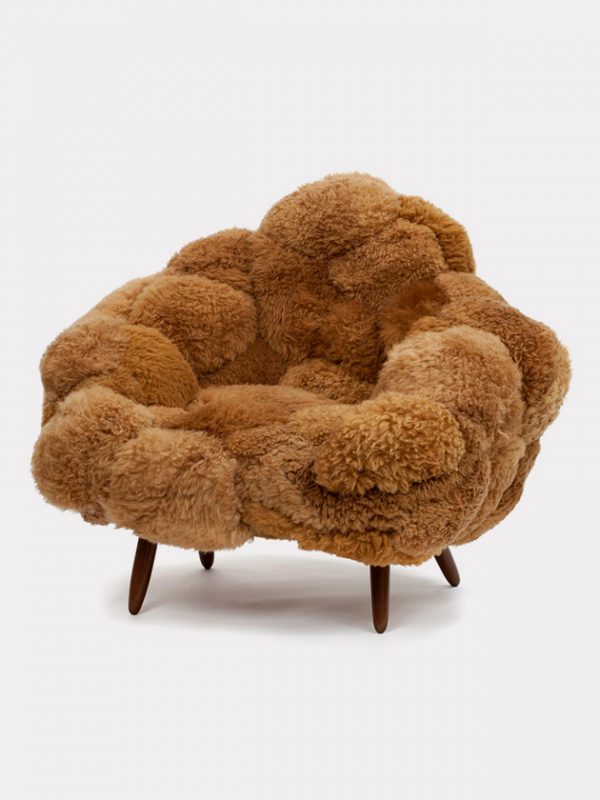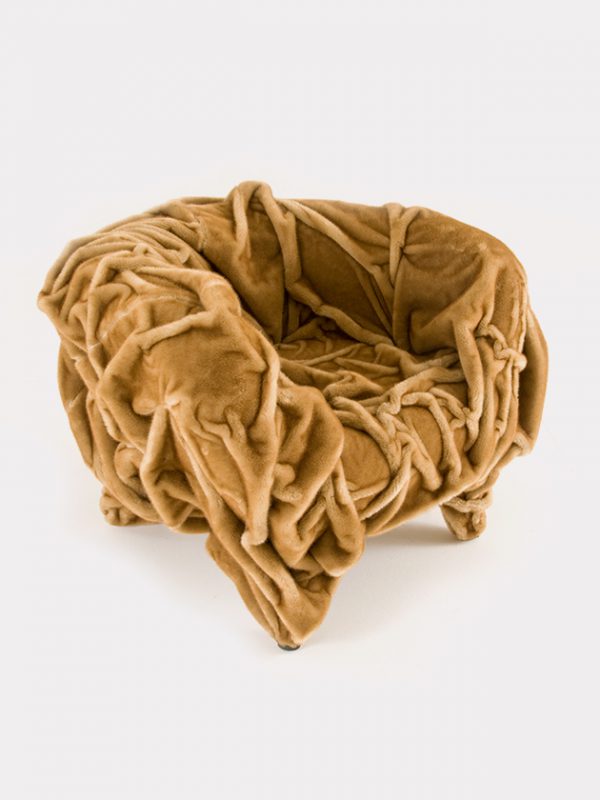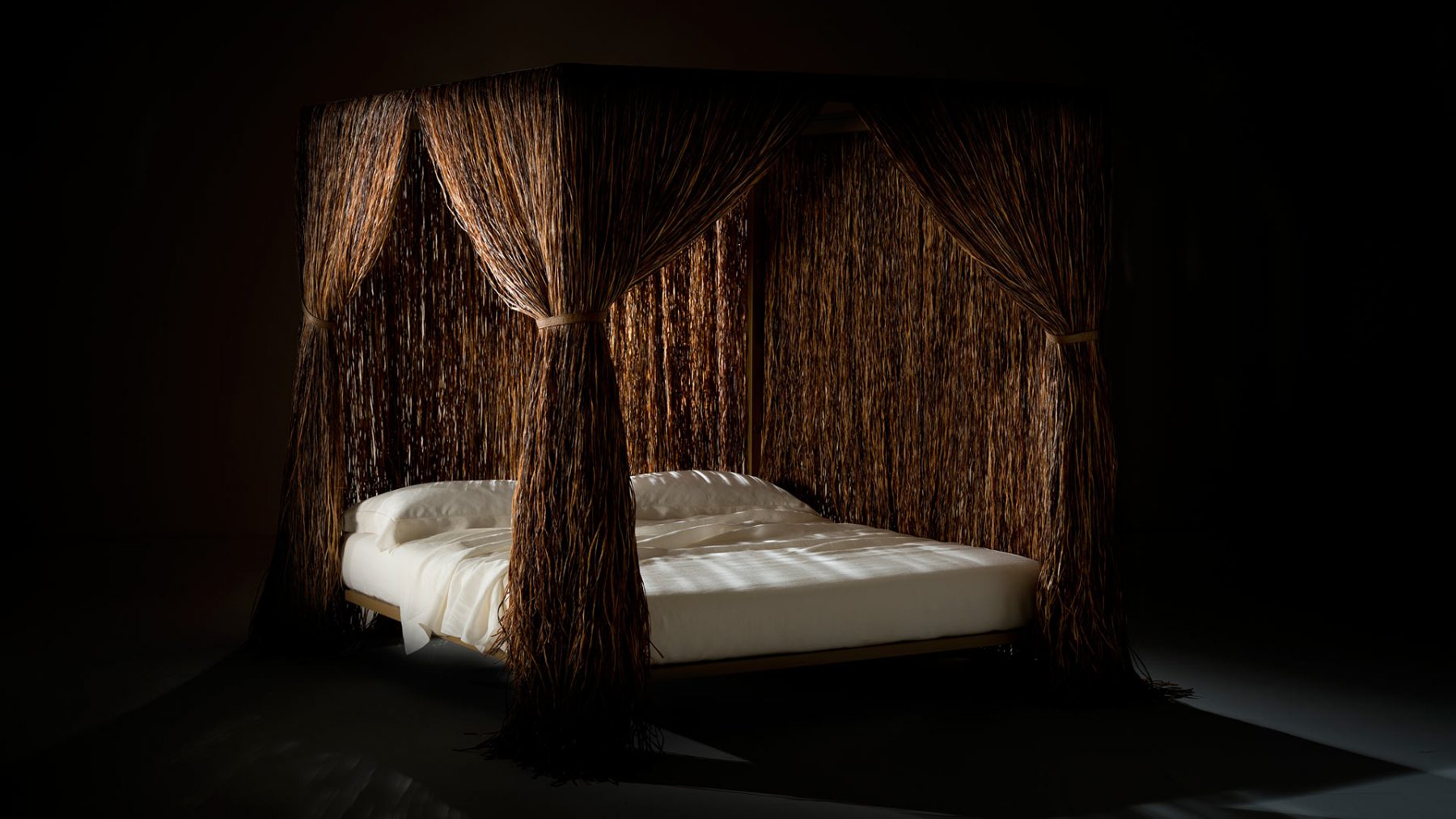Brazil’s Dynamic Duo by Norman Kietzmann | 6th March, 2017 | Personalities
Fernando und Humberto Campana are outliers in contemporary design. The brothers from São Paulo create hairy cupboards, armchairs made from junk and stuffed toys, and sofas that resemble enormous starfish. They craft sophisticated, imaginative objects that enrich people’s everyday lives with warmth and irony.
Fernando and Humberto Campana play according to their own rules. For the last three decades the brothers from São Paulo have been ignoring preconceived notions about how chairs, armchairs and cupboards are supposed to look. Their products are not slick or interchangeable. They are characterful creations that develop a life of their own and leave no one indifferent. Humberto Campana explains the brothers’ joint approach: “Our designs ask to be touched. These tactile qualities are also part of Brazilian culture in which craftsmanship always plays an important part.” The brothers were masters of upcycling long before the term became significant in a design context. They use industrial waste such as ropes, wires, small pieces of wood, leftover pieces of fabric and leather as a starting point, and turn these into imaginative objects at the interface of art and design. In some other creations they fall back on ready-made objects, for example when assembling an armchair made of large numbers of stuffed toys. The process of collecting, condensing and combining is a common thread that pervades the Campana brothers’ entire oeuvre. They still shun computers as design tools to this day. Instead, their work is based on making things by hand. “We start off with the materials, which we cut into pieces. We then paint, reorganize and finally reassemble them. At some point, you no longer see the original material, but recognize a living animal, plant or other structure that eludes our control. Our creations are beings you can have in your home, but which nevertheless have a certain savage quality to them,” says Fernando Campana. Their pieces of furniture charm with their primal, almost accidental appearance, which often conceals the sophisticated, non-industrial production processes involved.
“Our designs ask to be touched. This is part of our culture” Humberto Campana
Sometimes it takes months for the two to learn a specific braiding technique or other tricky task that will allow them to execute their designs. Fernando and Humberto Campana incorporate their “manual skills” into the designs and production processes, and so remove their creations from the realm of the interchangeable and the easily imitated. However, surprises and setbacks can never be ruled out. The designing brothers once traveled to an ethnic German settlement in the south of Brazil that specializes in woodwork. They wanted their “Favela Chair” (1991), which they had designed for the Italian company Edra, produced in a particular way: made up of chaotically assembled small pieces of wood. “These people were used to making very streamlined furniture. So we conducted a workshop with them in order to teach them how to be more anarchic, more ‘favela’,” says Fernando. The first 100 chairs were produced in exactly this way. When the brothers placed a second order, however, the chairs suddenly started arriving with the little pieces off wood all orderly and at right angles to each other. “The people were so sad when we told them that their chairs were ugly. They said: ‘We tried to do our best.’ We responded: ‘Do your worst, be irrational.’ We wanted to drive out their orderly impulse,” explains Fernando, summarizing the cross-cultural venture. The fact that the Campana brothers have a unique view of design is partially rooted in their background. When they founded their studio in São Paulo in 1983, Humberto (the older of the brothers, born in 1953) was already a law graduate, while his brother Fernando, eight years his junior, had just completed an architecture degree. The dissimilar duo soon caused a stir in São Paulo’s creative scene. The Brazilian city is one that they have a “love-hate relationship” with to this day. Fernando explains what he means as follows: “São Paulo is a metropolis that does not treat you like a human being at all – more like an animal. New York and Mexico City do the same. You are forced to use your imagination to discover beauty in places where it does not exist.” The brothers grew up in a completely non-urban environment: on a rather remote farm, 150 kilometers north of São Paulo – a place surrounded by spectacular waterfalls and exotic plants and animals.
Working together as siblings is something the Campanas see as an advantage: “When you are blood relatives, you can’t just tell each other: ‘I don’t want to see you anymore!’ You can say this to a regular business partner, though, and actually mean it. I can’t imagine never seeing my brother again, so we have to stick together,” says Fernando. Humberto agrees: “Of course we have big arguments from time to time, because we can tell each other anything. But it is also good for our work, because we can be very critical of one another. There is no flattery and we don’t pull our punches. We get straight to the point.” The Campana brothers have been trailblazers several times – and have been celebrated for this with exhibitions in New York’s MoMA, London’s Victoria & Albert Museum and at the Vitra Design Museum in Weil am Rhein in Germany. “In the 1990s, minimalism was the trend du jour in terms of design. Our work, on the other hand, was full of textures, with ornate and sensual elements. But, we didn’t give up, and stuck to our path,” says Humberto – who is the slightly more reserved of the two. Today’s return to artistic craftsmanship is something that they also anticipated early on – just like trialing limited editions as a creative playground for design ideas. While the early Campana creations were exclusively sold as gallery editions, in the 1990s the brothers also started collaborating with manufacturers like Alessi, Edra, Bernardaud, Baccarat, Lasvit and Louis Vuitton. But their designs never became arbitrary or conventional. Quite the contrary: “Cabana” (2010), for example, is a cupboard without doors, produced by Edra. In this piece of furniture, long strings of raffia fiber hang down and connect to the floor from the top of a freestanding column. They form a complete cover for the five levels of shelving. In order to retrieve stored items, you only need to reach through the “hairy” outer layer, which – in look and feel – subverts all the conventions of furniture making. The brothers also chose an unusual mix of materials for their “Pirarucu” series of cabinets (2013, Galerie Carpenters Workshop). The limited-edition wooden furniture series comprises only eight units, which are totally covered with the tanned skins of the freshwater fish bearing the same name. Their “Aster Papposus” sofa with its 16 velvety arms is reminiscent of a giant starfish or octopus, while the low, upholstered “Kaiman Jakarè” piece puts observers in mind of an intertwined group of crocodiles (both produced by Edra in 2006). The Brazilian brothers recently caused a stir with their costumes for the dance show Virtually There, which premiered last November at the Mana Contemporary art center in New Jersey. The garments for the new production of Oscar Schlemmer’s Triadic Ballet (1922) were made of holographic surfaces, with woven-in LEDs and inflatable fabrics, which made their appearance change depending on the angle at which the light hit them, or made them emit light themselves. These costumes were just as unusual as anything else created by the Campana Brothers, whose designs ask to be conquered, climbed on, or simply touched. They appeal to our playful instinct, promote interaction and prove time and again that exciting design solutions are developed mainly when going off the beaten track.
